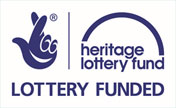
‘Tallys an Tir’ was a multi-faceted project. It worked with communities and primary schools throughout Cornwall to explore and rediscover our rural Cornish heritage through story. The project focused its work on 5 rural communities; (Manaccan near the Helford River; St.Clether near Launceston; St.Just in West Penwith; Luxulyan in mid-Cornwall and St.Mawes/St.Just in Roseland). This was a collaborative project with the Institute of Cornish Studies based at the University of Exeter. It was a follow on project from Family Farming and Tradition.
Community Stories of the Land
To help gather community stories from the land, we held a series of training workshops for local community groups/members. These were aimed to support communities to gather, record and share local stories. Artists, farmers and community members interpreted the land through stories, artwork, dialect and recordings.
We also captured memories through community events including Memory Walks, Oral History interviews and story sharing days. The Royal Cornwall Museum and Helston Folk Museum welcomed us in to explore their archives and many people delved into their personal archives to share amazing photographs and footage from time gone by. This included a large collection of archive photographs of farmers around the Helston and the Lizard from farm vet John Head.
Together this created a valuable archive of oral history, archive photography and film, providing a fascinating glimpse into our rich rural Cornish heritage.
Schools Workshops & Resouces
The digital stories created as part of the project were used as a starting point for a series of workshops in primary schools within the 5 project areas. As well as listening to farmers’ stories, the children became archivists, handled agricultural objects, and even learned how to milk a cow in the classroom! A clay dialect alphabet and large story canvases help embed learnings. Dance and movement at Rosehip Barn was another great way to engage with our rural heritage.
These stories provided inspiration for collaborative creative responses and eventually formed the basis of an Education Resource Pack for Key Stage 2 children. Focusing on literacy, history and art, the resources is an ideal way of helping teachers to engage children with their Cornish heritage. Listening to first hand stories about the changes that farming families have witnessed is a fantastic way to learn about our changing lifestyles and landscape.
Celebratory Events
The project concluded with a series of celebratory events. These were a brilliant way to showcase the stories, photographs and objects collected within each community, as well as the artwork produced by local primary school children. These events were a fantastic way to end the project and celebrate peoples memories and achievements. Displays consisting of films, photographs, objects and written material helped to share our unique Cornish heritage. The events also included food, music, family activities and traditional celebrations of the land, such as crying the neck.
Photos
- Story Canvas created during a workshop with Lanlivery School.
- Photograph by vet John Head.
- ‘Crying the neck’ ceremony at Gunwen Chapel.
Testimonials
- “I am extremely grateful to this project for helping me to scan over 400 black and white negatives which I shot in the 1990s. This has enabled this valuable record of our farming heritage to be preserved for the future and shared amongst the community depicted in the photographs. The response to the photographs has been so positive (162 people attended the last talk), that I now plan to share them through further talks and exhibitions. The project was a perfect opportunity to re-visit this collection, which may otherwise have been lost.”
John Head, participant - “The information collated through ‘Tallys an Tir’ was truly amazing. The stories told are such a valuable resource of information to future generations. The project brought back many memories of my early life living near Gunwen with my parents. My father and earlier generations of my family worked on the land most of their lives, so the project felt like a tribute to their hard work and endeavors and similarly the many people who shaped our countryside.
The project work in local schools allowed the next generation to understand the complexity of the daily lives of their ancestors rather than dismiss their way of life as old fashioned. The children who came to the workshops at Gunwen were enthralled and left with smiles of enjoyment on their faces. A great success that must be continued.
The ‘story of the people” must never be forgotten which is why projects like this one run by such dedicated people will always keep the past alive.”
Hilary Trump, participant - “The Tallys an Tir project was extremely enjoyable. It got me thinking of local dialect and how much it has declined over the past few decades; no doubt due to the movement of the Cornish to other parts of the country/world and the influx of people from outside of Cornwall. Who but a Cornishman is going to understand the meaning of terms such as “dreckly” and “ow are e my ansum” or what a “want” is? All this needs to be recorded before it is lost for good.
Through holding the final exhibition in the Gunwen Sunday School, it became apparent the room could have various other uses that could benefit the community, which we are now exploring.
All in all a very worthwhile project which got us all thinking and it didn’t end just with stories of the land! Thank you.”
Margaret Dunkley, participant
Funders & Links
This project was kindly funded by:
This project was a collaboration with the Institute of Cornish Studies (ICS) who are based at Exeter University. The ICS includes the Cornish Audio Visual Archive, which is housed at the Cornwall Centre in Redruth.
The free educational resource can be viewed at www.farmingstories.com. This was supported by the charity FACE; Farming & Countryside Education.
Other organisations and community groups we worked with include:





